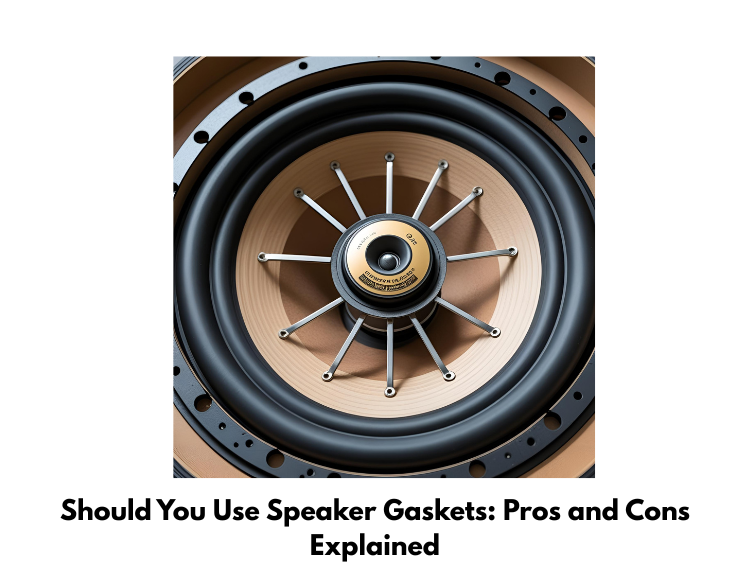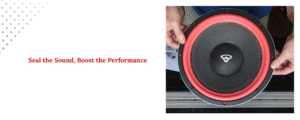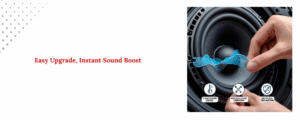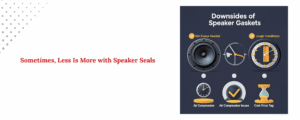In the case of achieving optimal performance with your speakers, minute details really do matter, such as whether you opt to use speaker gaskets or not. Such basic foam or rubber or cork rings may not appear to be too significant, but they are quite useful with regard to covering the gap between your speaker and the mounting surface. They are able to enhance sound, decrease unwanted vibrations and secure your gear when done right. However, do they have to be essential? In this article, we will discuss the advantages and disadvantages of speaker gaskets in order to determine whether it is worth it to include speaker gaskets in your setup.
Why Do You Need Speaker Gaskets?
Rubber or foam thin seals are placed between the speaker and the object to which it is attached, such as a door or panel. They are the speaker gaskets. The primary action that they take is creating a tight seal on the periphery of the speaker. This prevents the air leakages and ensures that the sound produced is clear, efficient and devoid of distortions. Adding a new set of speakers in a vehicle, speaker seals become extremely necessary since the current location of the mounting may not perfectly accommodate the new speakers.
Why Using Speaker Gaskets is a Good Idea
Speaker gaskets are very effective and fairly simple to apply, which will enhance the performance of your audio systems and durability. A good gasket provides a tight air seal between the speaker and its proximity surface, helping you eliminate undesirable air leakage, which can make bass response weak and sound a bit muffled at high frequencies. Any gaps you seal up will mean that all the sound energy has been sent in the right direction into the front, where it should have been going in the first place, rather than being wasted inside door panels or enclosures.
Speaker gaskets can also keep away rattles and vibrations, which may come about when speakers are directly hinged to rough surfaces. The difference is that you will have cleaner mids and highs with no buzz and other nasty artifacts of parts rattling around. Besides sound quality improvement, gaskets will prevent dust and rain water infiltration into your speakers, thus improving their durability, particularly for those fitted in cars because their door panels are exposed to different weather conditions.
It also helps to make an installation look more professional by filling any small gaps with the slimmest of gaps by providing a neat tight tight-fitting surface. What is best is that they are cheap and simple to install, therefore, something that can actually be used by anybody who wants to maximize their sound system, yet does not want to spend extra money.
Need speakers in bulk? Stay ready— Check out the new B2B platform.
The Bad Things About Speaker Gaskets
As much as there is an advantage to speaker gaskets, they are not always ideal. The negative aspect is that the bad gaskets may wear and may even lose the seal with time, hence may rattle or even leak, causing air to break the sound quality. Wrong installation can also lead to the appearance of the misalignment between the speaker and the surface on which it is mounted, which itself may in fact lead to even more unwanted vibrations. There is also the unpleasant possibility of adding gaskets in places that you do not need them, it is merely an additional expense with no point to it when it is better to have built-in seals on your speakers or sufficient protection on your mounting area. Gaskets may prove to be a waste of time and effort for a cheap, fast installation.
Should You Use Speaker Gaskets?
Eventually, your setup is what will determine whether you require speaker seals or not. This is applicable where you can make your car audio sound tighter, with more bass, by adding gaskets to it and make the sound more professional. You might not have to use additional gaskets though, when your car has the already sealed mounting area or when your speakers have inbuilt seals. They may not be worthwhile in case of quick or low-budget installs. In general, gaskets are a cheap method to maximize speaker performance; however, make sure that they are fitted correctly and make sure they suit your system to achieve the best performance.




